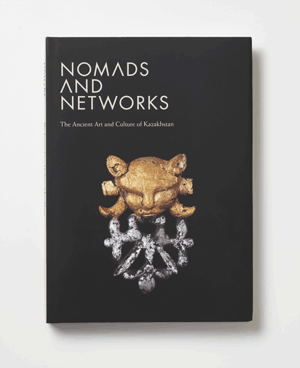 |
| Congressman Steve Chabot |
The U.S. House of Representatives by voice vote yesterday passed the Foreign Cultural Exchange Jurisdictional Immunity Clarification Act (FCEJICA). The legislation seeks to protect foreign artwork on loan to American museums by clarifying a part of the Foreign Sovereign Immunities Act (FSIA).
The legislation was introduced by Judiciary Committee member Rep. Steve Chabot (R-OH) on February 24 and co-sponsored by Rep. John Conyers (D-MI), Rep. Lamar Smith (R-TX), and Rep. Steve Cohen (D-TX). Their intent is to have a law that encourages more foreign lending of art to America without the fear of lawsuits.
Under the current federal statute known as Immunity from Seizure Under Judicial Process of Cultural Objects Imported for Temporary Exhibition or Display (the Immunity from Seizure Act (IFSA), 22 U.S.C. § 2459), foreign lenders are encouraged to lend cultural objects to museums in the United States without risk that those objects will become targets of litigation while on American soil. The statute protects imported objects determined by the State Department to be (1) of cultural significance, (2) intended for temporary, nonprofit exhibition, and (3) in the national interest. Museums importing objects into the U.S. for temporary display must apply for this legal protection. The notice of immunity is then published in the Federal Register.
The FSIA, meanwhile, is a law that generally protects foreign states from lawsuits. The FSIA embodies a long held principle of American jurisprudence. But the law has been interpreted to sometimes grant jurisdiction to the courts over foreign governments when their artwork is displayed in the U.S. because such loans are deemed “commercial activity.” Specifically, 28 U.S.C. 1605(a)(3) of the FSIA states:
“A foreign state shall not be immune from the jurisdiction of courts of the United States or of the States in any case . . . in which rights in property taken in violation of international law are in issue and that property or any property exchanged for such property is present in the United States in connection with a commercial activity carried on in the United States by the foreign state; or that property or any property exchanged for such property is owned or operated by an agency or instrumentality of the foreign state and that agency or instrumentality is engaged in a commercial activity in the United States.”
By way of example, in the 2005 case of Malewicz v. City of Amsterdam the heirs of Kazimir Malevich sued Amsterdam in federal court in Washington, DC to either recover artworks that the city’s Stedelijk Museum loaned to American museums or to acquire $150 million in damages. The heirs claimed that the foreign museum unlawfully obtained the paintings. Amsterdam argued that the Immunity from Seizure Act protected it from a lawsuit, but the federal district court ruled that Amsterdam had engaged in “commercial activity” under the FSIA by loaning the art to American institutions. While IFSA may protect artwork from seizure, the FSIA did not protect Amsterdam from related damages said the court. So the lawsuit moved forward.
The FCEJICA was introduced in order to remedy potential conflicts between IFSA and the FSIA. The bill adds a new section to the FSIA that protects foreign nations from lawsuits in American courts related to loaned artwork. The bill that passed the Judiciary Committee on February 28 and the full House on March 19 states:
“If a work is imported into the United States from any foreign country pursuant to an agreement that provides for the temporary exhibition or display of such work entered into between a foreign state that it is the owner or custodian of such work and the United States or one or more cultural or educational institutions within the United States, [and] the President, or the President’s designee, has determined . . . that such work is of cultural significance and the temporary exhibition or display of such work is in the national interest; and the notice thereof has been published . . . any activity in the United States of such foreign state, or of any carrier, that is associated with the temporary exhibition or display of such work shall not be considered to be commercial activity by such foreign state . . . .”
The bill adds that art stolen by the Nazis shall not be protected from legal claims filed in federal court.
A House report attached to the bill notes that "the intent of IFSA is being frustrated by the Foreign Sovereign Immunities Act (FSIA). Recent court decisions have interpreted a provision of FSIA in a manner that opens foreign governments up to the jurisdiction of U.S. courts if foreign government-owned artwork is present in the United States in connection with a commercial activity and there is a claim that the artwork was taken in violation of international law." The report adds: "This has led, in many instances, to foreign governments declining to export artwork and cultural objects to the United States for temporary exhibition or display. Future cultural exchanges may be seriously curtailed by foreign lenders' unwillingness to permit their artwork and other cultural objects to travel to the United States. In order to keep the exchange of foreign government-owned cultural objects flowing, this legislation clarifies the relationship between the immunity provided by IFSA and the exceptions to sovereign immunity provided for in FSIA."
The Congressional Budget Office reported that enactment of the legislation "would have no significant impact on the federal budget."
The bill now goes to the Senate for its consideration.
This link contains a video of Judiciary Committee Chairman Rep. Lamar Smith's remarks on the floor of the House.
CONTACT: www.culturalheritagelawyer.com


